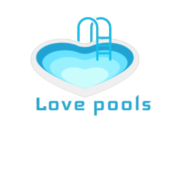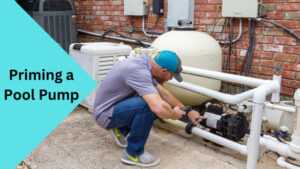Welcome to our comprehensive guide on priming a pool pump, where we’ll provide you with valuable insights, tips, and tricks to ensure your pool pump operates at its best. Whether you’re a seasoned pool owner or a first-time pool enthusiast, understanding the importance of proper priming and learning how to tackle common issues will help you enjoy a clean and refreshing swimming experience all season long.
In this guide, we’ll delve into the fundamentals of pool pump priming, discuss troubleshooting techniques, and provide guidance on pool pump leaks and the best wire choices for optimal performance. So, let’s dive in and discover how to make priming a pool pump a breeze!
Why Proper Pool Pump Priming is Essential
Before we jump into the step-by-step guide on priming your pool pump, let’s take a moment to understand why this process is so crucial. Proper pool pump priming ensures efficient water circulation, which is vital for pool maintenance and cleanliness. Without a well-primed pump, your pool water may become stagnant, leading to a buildup of debris and potentially harmful bacteria.
Additionally, a properly primed pool pump helps avoid damage caused by air in the system. Air pockets in the pump can cause inadequate water flow, increased energy consumption, and premature wear and tear on vital components. By following the correct priming procedures, you can prevent these issues and keep your pool pump running smoothly.
How to Prime a Pool Pump: Step-by-Step Guide
Now that we understand the importance of pool pump priming, let’s dive into the step-by-step process to ensure your pump operates efficiently. By following these guidelines, you’ll reduce the risk of air pockets and enjoy optimal water circulation. Also for you How Much Water Does A Hot Tub Hold? A Comprehensive Guide
3.1 Understanding the Pool Pump System
Before you begin the priming process, it’s essential to familiarize yourself with your pool pump system. Pool pumps consist of several components, including the pump itself, the filter, valves, and plumbing lines. Understanding how these parts work together will help you troubleshoot any issues that may arise during the priming process.
3.2 Identifying Common Pool Pump Issues
Before diving into the actual priming steps, let’s take a moment to identify common pool pump issues that can hinder the priming process. Being aware of these issues will help you troubleshoot efficiently and keep your pool pump in top shape.
One frequent problem is the presence of air in the pump, resulting in reduced water circulation. Air can enter the system through various points, such as leaks in the pump lid or plumbing connections. Another issue to watch out for is a clogged pump basket or filter, which can restrict proper flow and prevent successful priming.
3.3 Tips and Tricks for Avoiding Air in the Pump
Now that you’re familiar with potential pool pump issues, let’s explore some tips and tricks to avoid air in the pump and ensure proper priming:
- Inspect and Maintain Seals: Regularly inspect the pump lid O-ring and replace it if damaged. Additionally, check for any cracks or faults in the pump’s sealing components to prevent air from entering the system.
- Proper Water Level: Maintain an optimal water level in your pool to ensure smooth priming. If the water level is too low, air may be drawn in during the priming process.
- Bleed Air from the System: Utilize the air release valve on the filter system to release air trapped inside. This will improve water flow and minimize air pockets in the pump.
- Check for Leaks: Inspect all plumbing connections, valves, and fittings for leaks. Fix any leaks promptly to prevent air from entering the system.
- Clean Pump Basket and Filter: Regularly clean the pump basket and filter to remove debris and ensure unobstructed water flow. A clogged basket or filter can cause inadequate priming and hinder overall pump performance.
By following these tips, you’ll minimize the likelihood of encountering air in your pool pump and optimize the priming process for a hassle-free swimming experience. You should check our latest article, about A Complete Guide on How to Clean Hot Tub Filters
Troubleshooting Pool Pump Leaks

While priming a pool pump, you may encounter leaks that require prompt attention. In this section, we’ll explore common sources of leaks and provide guidance on how to address them effectively.
4.1 Identifying the Source of the Leak
To fix a leak, it’s crucial to identify its source correctly. The following areas are common culprits for pool pump leaks:
- Pump Lid: Inspect the pump lid for any cracks or a worn-out O-ring. Ensure the lid is securely fastened and the O-ring is in good condition.
- Plumbing Connections: Examine all plumbing connections for leaks. Tighten any loose fittings and replace faulty or damaged connections.
- Valves: Check the valves for leaks and ensure they are fully closed when the pump is running.
- Seals: Inspect the pump’s seals for any signs of wear or damage. Replace them if needed to prevent leaks.
4.2 Fixing Pool Pump Leaks from the Bottom
A leaking pool pump from the bottom can indicate a more severe issue. If you notice water pooling beneath the pump, follow these steps to address the problem:
- Turn Off the Power: Before attempting any repairs, always switch off the power supply to ensure your safety.
- Drain the Pump: Drain the pool pump entirely by opening the drain plug. This will prevent further leakage during the repair process.
- Inspect the Seals: Examine the pump’s seals thoroughly. Replace any damaged seals to eliminate the leak.
- Replace Faulty Parts: If the leak persists, it may be necessary to replace faulty parts, such as gaskets or the entire pump housing. Consult a professional if needed to ensure proper replacement.
- Test for Leaks: Once the repairs are complete, test the pump for leaks by turning it on and monitoring for any signs of leakage.
By addressing pool pump leaks promptly and effectively, you’ll promote the longevity and smooth operation of your pump while maintaining a clean and safe swimming environment.To explore more details and considerations regarding Cost to install a Pump, our comprehensive guide on How Much Does It Cost to Install a Pool Pump? has you covered.
Choosing the Right Wire for your Pool Pump
5.1 Importance of Proper Wiring for Pool Pumps
Proper wiring is crucial for the safe and efficient operation of your pool pump. Choosing the right wire gauge ensures that the electrical current flows optimally and prevents potential issues, such as overheating or electrical failures.
5.2 Tips for Selecting the Right Wire
When selecting the wire for your pool pump installation or replacement, consider the following tips:
- Check Local Regulations: Familiarize yourself with local electrical codes and regulations to ensure compliance when selecting the wire for your pool pump. This will help maintain safety standards and prevent potential legal issues.
- Determine the Correct Wire Gauge: Identify the appropriate wire gauge based on the distance between your pool pump and the electrical panel. Consult a professional electrician if you are unsure about the right gauge for your specific setup.
- Choose Weather-resistant Wire: Opt for wire with weather-resistant properties to ensure durability and prevent damage from exposure to outdoor elements.
- Consider Voltage Requirements: Determine the voltage requirements of your pool pump and select a wire that can safely accommodate the electrical load without overheating.
By following these wire selection tips, you’ll ensure a safe and efficient electrical connection for your pool pump, promoting reliable performance and preventing potential hazards.
Conclusion
In conclusion, priming a pool pump is an essential process to guarantee proper water circulation, prevent air pockets, and maintain a clean and refreshing swimming experience. By following the step-by-step guide provided in this blog post, you’ll be equipped with the knowledge and tips to prime your pool pump effectively.
Remember, understanding your pool pump system, identifying common issues, and implementing preventive measures are key to successful priming. Additionally, addressing pool pump leaks promptly and choosing the right wire gauge for your electrical connection are crucial for optimal pump performance and safety.
Now, it’s time to put this valuable information into action! Take charge of your pool pump’s priming process, troubleshoot any issues along the way, and enjoy a delightful swim season with a well-primed pool pump. Happy swimming!

Greetings, fellow pool enthusiasts! I’m Turner Davis, your dedicated guide to the world of pool care and maintenance. With over a decade of experience in the field, I’ve made it my mission to transform ordinary pools into extraordinary aquatic retreats.

